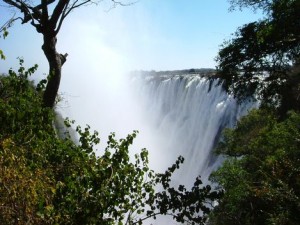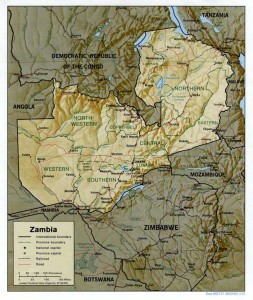Welcome!
THE SITE POSTS POPULAR ARTICLES, ESSAYS AND OTHER USEFUL INFORMATION ABOUT WATER AS A UNIQUE NATURAL RESOURCE.


Mosi-oa-Tunya, Victoria Falls
The Mosi-oa-Tunya / Victoria Falls National Park contains one of the world’s most spectacular waterfalls. The falls and associated gorges are an outstanding example of river capture and the erosive forces of the water still continues to sculpture the hard basalts. The complex of conservation areas in Zimbabwe covers over 1,846,700 ha excluding forest reserves.
The park abuts Dambwa Forest Reserve in Zambia. The falls are the most significant feature of the park, and when the Zambezi is in full flood (usually February or March) they form the largest curtain of falling water in the world. During these months, over 500 million litres of water per minute go over the falls, which are 1,708 m wide, and drop 99 m at Rainbow Falls in Zambia. At low water in November flow can be reduced to around 10 million litres per minute, and the river is divided into a series of braided channels that descend in many separate falls. Read more
Trapped Sunlight Cleans Water
High energy costs are one drawback of making clean water from waste effluents. According to an article in the journal Biomicrofluidics, which is published by the American Institute of Physics, a new system that combines two different technologies proposes to break down contaminants using the cheapest possible energy source, sunlight. Microfluidics — transporting water through tiny channels — and photocatalysis — using light to break down impurities — come together in the science of optofluidics.
“These two technologies have been developed in parallel but there have been few efforts to employ the natural synergy between them,” says author Xuming Zhang of the Hong Kong Polytechnic University. “Our results showed a dramatic improvement in the efficiency of the photocatalyst.” Read more
Did you know…? Facts and figures about Zambia
- Zambia is a landlocked country in southern Africa, which mainly lies in the Zambezi River basin, and partially in the Congo River basin in the north.
- Between 2000 and 2007 Zambia experienced unusually unstable weather, with a sequence of two flood years, two drought years and two years with normal rainfall.
- Zambia’s surface water potential totals some 100 billionm3, with the Zambezi River contributing over 60% of the runoff. Consequently, as a major stakeholder in the Zambezi River Authority, along with Zimbabwe, Zambia is helping establish the Zambezi Watercourses Commission. Read more
Did you know…? Facts and figures about Istanbul
- Istanbul, located in northwestern Turkey, has a population of over 12 million. Home to 17.6% of the country’s population, it is the largest city in Turkey and one of the 25 largest in the world.
- Although data do not indicate a clear declining trend in rainfall in Istanbul and its surroundings, extreme events – especially droughts – seem more pronounced than in the past. In 2006, the measured rainfall of 66.7 mm was the record low for the previous 50 years, a period during which the average was 257.2 mm per year. Furthermore, the water level in reservoirs serving the city was just 45% in 2004, and plummeted to around 25% in 2007 and 2008. Read more











